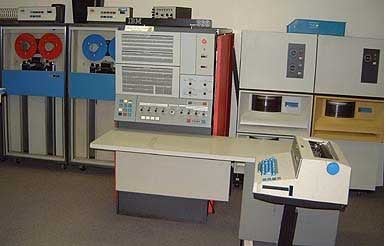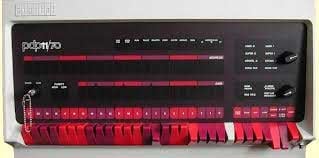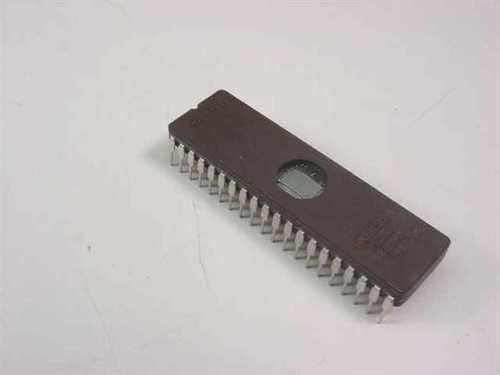Being the guy with the most grey hair (what little is left) in the office, I occasionally look back in amazement at how far our industry has progressed. Look at some of our other 20th century marvels: the airplane – basically the same since the 60s; automobiles – they might be flashier, but still fundamentally the same for decades. The first computer I ever used was an IBM 360 with 64K of core memory and 3 disk drives with 7 megabytes of storage each. You can’t even fit a small photo in 7 meg today.
I wrote my first program by punching in FORTRAN code on a deck of 80-column cards that I handed to an operator in a glass room. If I was lucky, I’d get the results back in a pigeon-hole about an hour later. The speed of the processor was about ¼ MHz and it filled up 20 x 20 size room. It ran one program at a time, reading them from a stack of cards (9-edge down!) on a noisy card reader.

My first real job was programming the then-new PDP-11 minicomputer from Digital Equipment Corporation. I was amazed how advanced this machine was. Two 6 foot tall 19-inch racks and it could support 45 users (on a good day) each with their own CRT[i]. These machines were much nicer to program than the old IBMs, and in fact, there are many still running process control applications around the world. I wrote code in assembler, DIBOL, compiled BASIC and, yes, even FORTRAN. Computer hardware was advancing quickly and I moved on to the legendary VAX computer. Truly a classic machine used everywhere from the plant floor controlling machinery to the front office handling accounting functions.

About this time the PC arrived on the scene. At first, a lot of us thought they were little more than expensive toys. But they kept getting faster. Smaller. Cheaper. Then all kinds of software started coming out for them and the next thing you knew – PCs were everywhere. Those that still thought they were toys quickly went out of business – like my beloved Digital Equipment Corporation.
As a professional programmer, survival meant adapting to new equipment, new operating systems, new programming languages and new methodologies. Computer programming had also grown up as a serious discipline. If someone had shown me one of today’s laptops (let alone a tablet or cell phone) back in 1977, I wouldn’t have believed my eyes. To further illustrate the rate of advancement, a solid state memory chip (a relatively new concept) that could hold a whopping 16K bits of data measured 3 x 1.5 cm and was quite a marvel. Compare that with a thin chip the size of your little fingernail that can hold 128 Gigabytes! And costs under $50.


So why the history lesson? In this industry, nothing is as constant as change. The systems we use today are very different than what we used 20 years ago. Who knows what we’ll be using 20 years from now. I do know that without a dedication to continuous learning, I’ll also be relegated to that historical scrapheap.
One thing I appreciate about working at Vertech is the company culture of staying sharp. The staff has an annual requirement of attending training or an industry conference. This year I attended Microsoft Build in Seattle where I learned both what’s right around the corner and what coming down the road in a few years. Whether it’s Siemens technical training, Rockwell Tech-Ed, Schneider Electric Global Software Conference, or the Ignition Community Conference, Vertech is dedicated to keeping its programmers, designers and engineers up to date on industry happenings and innovations.
Our staff has taken it even further with biweekly informal seminars given by one of our own on a variety of technical topics. I’ve learned about topics as varied as color and design theories when building user interfaces, game theory applied to operator interfaces, memory-resident databases and even how to get a ham radio license. We just started a monthly hack-a-thon on the first Saturday where staff can present pet projects. Last month we saw what can be done with the $35 Raspberry Pi.
By staying sharp, we are able to offer world-class solutions to our customers even while technology advances at gigabit speeds.
Learn more about how our culture of staying sharp contributed to Vertech being named a Top Place to Work again this year.


COMMENTS